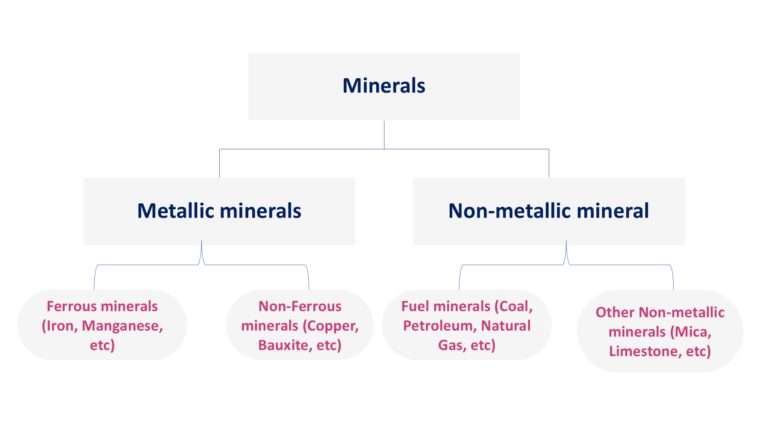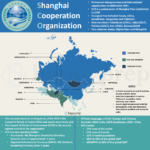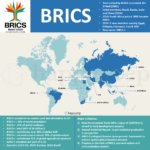Distribution of Key Natural Resources
Distribution of Key Natural Resources
What are the Natural Resources?
Natural resources are essential for economic development and human survival. Their distribution varies across different regions due to geological, climatic, and environmental factors. Natural resources are materials or substances found in nature that are essential for human survival and economic development.
Classification of Natural Resources?
Natural resources can be broadly classified on the basis of renewability, origin and distribution.
Classification based on renewability
On the basis of renewability, Natural resources can be classified into:
- Renewable resources: These resources are abundantly available in nature and are not depleted by human use. They are sustainable and can be used continuously without any risk of exhaustion. Common examples of renewable resources are-
- Solar Energy – The sun’s energy is limitless and can be harnessed for electricity and heating.
- Wind Energy – Wind power is generated using turbines and does not get exhausted.
- Geothermal Energy – Heat from the Earth’s interior is used for power generation.
- Tidal and Wave Energy – Energy from ocean tides and waves is renewable and inexhaustible.
- Non-Renewable resources: These resources exist in finite quantities and can be depleted over time if overused. They require careful management and conservation. Some common examples of non-renewable resources are coal, petroleum, natural gas, gold, diamond,etc
Classification based on Origin
On the basis of origin, Natural resources can be classified into:
- Biotic Resources (Living resources): Biotic resources are derived from living organisms such as plants, animals, and microorganisms. Some common examples includes forests, fisheries, livestock, etc
- Abiotic Resources (Non-Living resources): Abiotic resources come from non-living sources and include minerals, metals, water, and air.
Classification based on availability
On the basis of availability, Natural resources can be classified into:
- Ubiquitous Resources: resources which are available everywhere such as air, water, sunlight, etc
- Localised Resources: resources which are available in a specific region and needs to be extracted for usage. Common example includes coal, petroleum,etc
Distribution of Key Natural Resources Across the World

Iron
Iron ore is one of the most important mineral resources in the world, forming the backbone of industries and modern infrastructure. It is the primary raw material for the production of iron and steel. The global demand for iron ore has grown significantly due to rapid industrialization, urbanization, and technological advancements. Majority of the iron ore that is mined is used in iron and steel industry.
Major iron reserves are found in Australia, Brazil, Russia, India and North America. Odisha, Jharkhand, Chhattisgarh, Karnataka, Goa, Maharashtra are the major iron ore producing states.
Manganese
Manganese is another ferrous mineral which is extensively used in iron and steel industry. It is also used in other industries such as paints, pesticides and batteries.
Major manganese producing countries include Gabon, China, Australia and South Africa. India is also a major producer of manganese and reserves are found mainly in Odisha and Karnataka.
Copper
Copper exists in pure state and is an excellent conductor of heat and electricity. Because of these properties, copper is mainly used in electrical wires, electric motors, transformers etc.
The major producer of copper is Chile resulting in about quarter of world’s production. It is followed by Peru, Congo, China and United States. In India, Rajasthan and Madhya Pradesh are the leading states in the production of Copper
Bauxite
Bauxite is the primary ore of aluminum. With vast reserves and increasing demand, efficient extraction and sustainable mining practices are essential for its long-term utilization. India, with its rich bauxite deposits, continues to be a key player in the global bauxite industry.
Guinea, Australia, China, Brazil, India holds significant reserves however Australia is the biggest producer followed by Guinea. In India, Odisha, Chhattisgarh, Jharkhand Maharashtra, and Madhya Pradesh are the major reserve holder and producer.
Coal
Coal has been a vital source of energy for centuries, powering industries, homes, and transportation. It is a black or brownish sedimentary rock rich in carbon and is formed from the remains of ancient plant life buried and subjected to heat and pressure over millions of years. Coal is primarily used for electricity generation, steel production, and as a fuel source in various industries.
Countries with the largest reserves include USA, Russia, China, Australia, India. China is the biggest producer and consumer of coal. India has the fifth-largest reserves and the major coalfields are in Jharkhand, Odisha, Chhattisgarh, West Bengal, Madhya Pradesh, Telangana and Maharashtra.
Petroleum
Petroleum, commonly known as crude oil, is one of the most valuable natural resources in the world. It is a fossil fuel formed from the remains of ancient marine organisms buried under layers of sediment and subjected to heat and pressure over millions of years.
Middle east holds the largest reserve of petroleum. The largest producers include Middle East (Saudi Arabia, Iran, Iraq, UAE), Russia, USA, Venezuela, Canada. In India, some of the major oil fields are found in Assam, Gujarat, Maharashtra.
Natural Gas
It is a fossil fuel composed mainly of methane and is found deep underground, often alongside petroleum reserves.
Some of the countries with major reserve and production includes USA, Russia, Iran, Qatar. In India, natural gas is found is Mumbai-high, Krishna-Godavari basin, Assam.
Diamond
Diamonds are made of pure carbon and are the hardest naturally occurring substance. They are formed deep within the earth under extreme heat and pressure. Other than jewellery, diamonds have industrial applications also such as cutting and drilling.
Russia, Canada and many African nations including Congo, Botswana, Angola, South African,etc are the major producers of diamond. In India, Madhya Pradesh and Andhra Pradesh are the major producers. India is a global leader in diamond cutting and polishing.
Gold
Gold is found in pure state. It is soft, ductile and malleable metal. It is one of the least reactive chemical elements. China, Russia, Australia, Canada and USA are the major gold producing countries. In India, Kolar gold fields, Hutti gold fields and Ramgiri are the important gold fields.
Uranium
Uranium is a heavy metal that plays a critical role in energy production. Uranium is the primary fuel for nuclear power plants. Other applications include medical use, defence and scientific research. Leading producers include Kazakhstan, Canada, Australia, Russia, Namibia. India does not have significant reserve of Uranium and is mainly dependent on imports. However, potential reserve has been detected in Andhra Pradesh and Telangana.
Want to read some more articles?
-
 Shanghai Cooperation Organization (SCO): Origin, Members, Facts, etc for UPSC and other exams
Shanghai Cooperation Organization (SCO): Origin, Members, Facts, etc for UPSC and other exams -
 BRICS: Origin, members and others for UPSC, PSC & other exams
BRICS: Origin, members and others for UPSC, PSC & other exams -
 BIMSTEC for UPSC: Origin, Members & More
BIMSTEC for UPSC: Origin, Members & More -
 General Science for Competitive exams: UPSC, PSC, APFC, EO-AO, SSC, etc
General Science for Competitive exams: UPSC, PSC, APFC, EO-AO, SSC, etc -
 THE TRADE UNIONS ACT, 1926 for UPSC EPFO APFC/EO-AO, ALC, and Other exams
THE TRADE UNIONS ACT, 1926 for UPSC EPFO APFC/EO-AO, ALC, and Other exams -
 Understanding Macroenvironment: Marketing Environment in Principles of Marketing
Understanding Macroenvironment: Marketing Environment in Principles of Marketing -
 Understanding Microenvironment: Marketing Environment in Principles of Marketing
Understanding Microenvironment: Marketing Environment in Principles of Marketing -
Interjections in English
-
Conjunctions in English
Recruitment notifications update!
-
Recruitment 2025: Recruitment for Teaching Staff in The School of Planning and Architecture, New Delhi - Vacancy, Posts, Grade Pay, etc
-
Recruitment 2025: Vacancies in Inter-University Centre for Astronomy and Astrophysics (IUCAA)
-
Recruitment 2025: Recruitment on Deputation basis in National Anti Doping Agency (NADA)
-
Recruitment 2025: Various vacancies in Artificial Limbs Manufacturing Corporation of India (ALIMCO)
-
Recruitment 2025: Various vacancies in Land Ports Authority of India
Copyright© 2024 | All rights reserved | Made in India